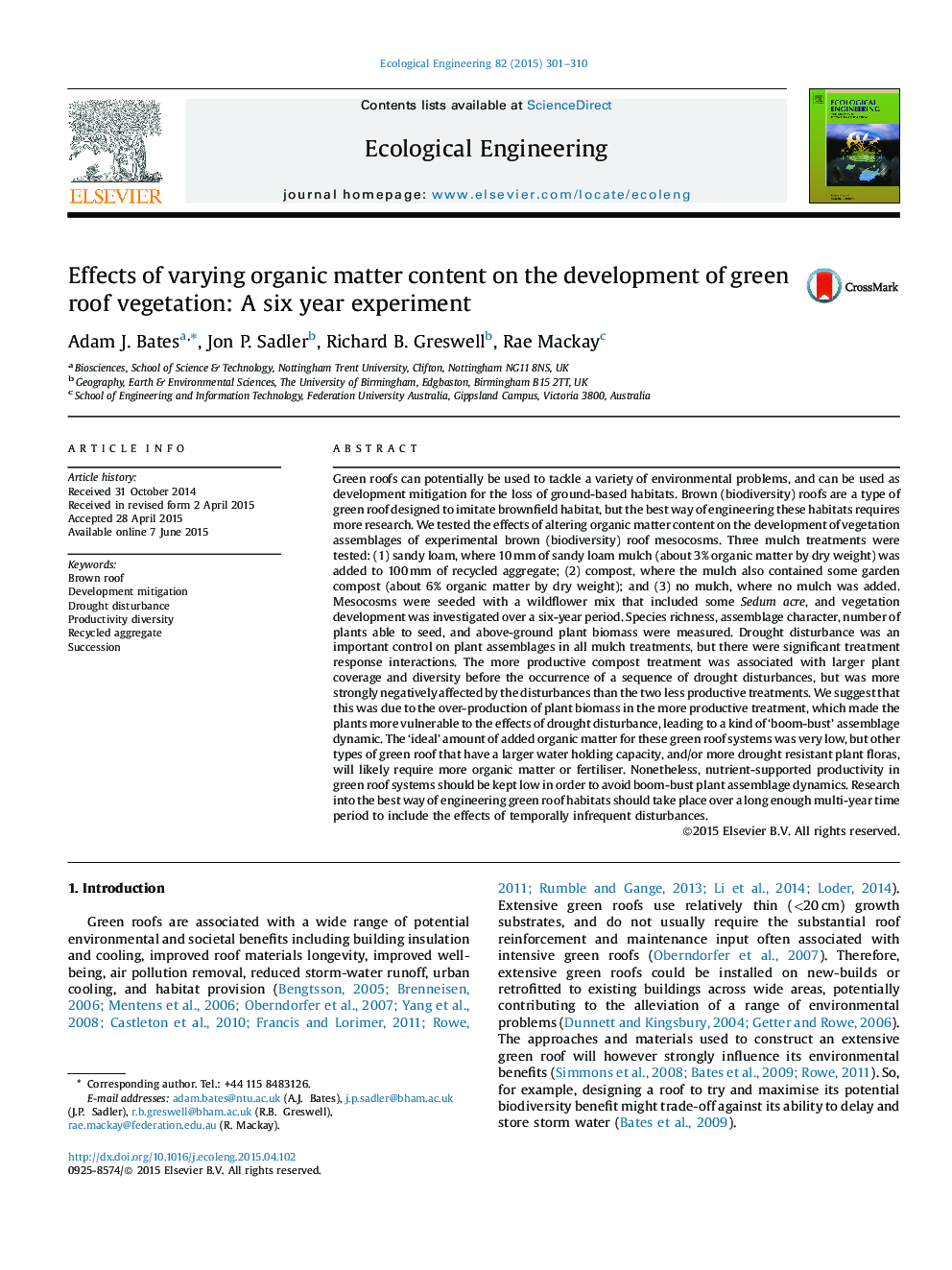| Article ID | Journal | Published Year | Pages | File Type |
|---|---|---|---|---|
| 4388975 | Ecological Engineering | 2015 | 10 Pages |
•Drought disturbance was a key factor influencing the green roof plant assemblages.•The assemblage response to drought disturbance was mediated by the productivity of the system.•Drought disturbance caused more reduction in plant coverage in the higher productivity systems.•A good understanding of green roof plant assemblages requires multiple years of data.
Green roofs can potentially be used to tackle a variety of environmental problems, and can be used as development mitigation for the loss of ground-based habitats. Brown (biodiversity) roofs are a type of green roof designed to imitate brownfield habitat, but the best way of engineering these habitats requires more research. We tested the effects of altering organic matter content on the development of vegetation assemblages of experimental brown (biodiversity) roof mesocosms. Three mulch treatments were tested: (1) sandy loam, where 10 mm of sandy loam mulch (about 3% organic matter by dry weight) was added to 100 mm of recycled aggregate; (2) compost, where the mulch also contained some garden compost (about 6% organic matter by dry weight); and (3) no mulch, where no mulch was added. Mesocosms were seeded with a wildflower mix that included some Sedum acre, and vegetation development was investigated over a six-year period. Species richness, assemblage character, number of plants able to seed, and above-ground plant biomass were measured. Drought disturbance was an important control on plant assemblages in all mulch treatments, but there were significant treatment response interactions. The more productive compost treatment was associated with larger plant coverage and diversity before the occurrence of a sequence of drought disturbances, but was more strongly negatively affected by the disturbances than the two less productive treatments. We suggest that this was due to the over-production of plant biomass in the more productive treatment, which made the plants more vulnerable to the effects of drought disturbance, leading to a kind of ‘boom-bust’ assemblage dynamic. The ‘ideal’ amount of added organic matter for these green roof systems was very low, but other types of green roof that have a larger water holding capacity, and/or more drought resistant plant floras, will likely require more organic matter or fertiliser. Nonetheless, nutrient-supported productivity in green roof systems should be kept low in order to avoid boom-bust plant assemblage dynamics. Research into the best way of engineering green roof habitats should take place over a long enough multi-year time period to include the effects of temporally infrequent disturbances.
